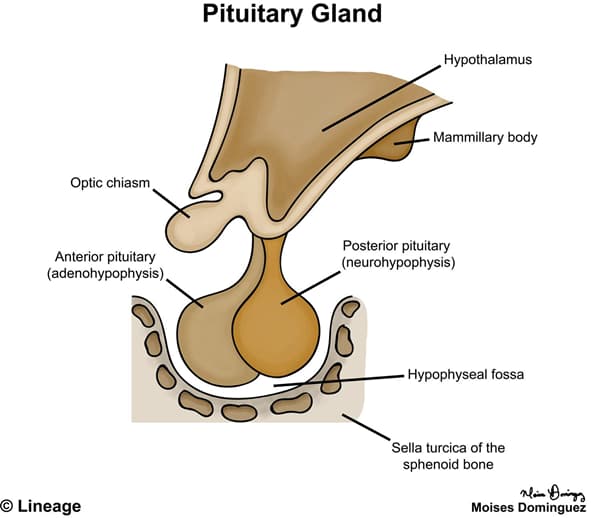Overview

Introduction
- Function
- Anatomy
- embryology
- derived from an evagination of the floor of the forming ventricular system
- the pituitary gland resides within the sella turcica
- underneath the sella turcica is the sphenoid sinus allowing
- a transphenoidal surgical approach to access the pituitary fossa
- underneath the sella turcica is the sphenoid sinus allowing
- embryology
- Clinical correlate


